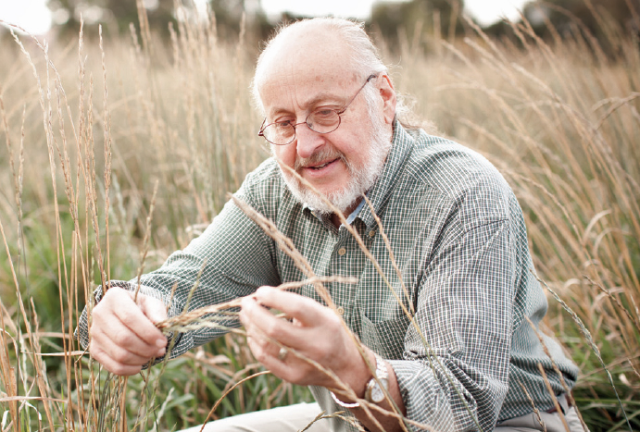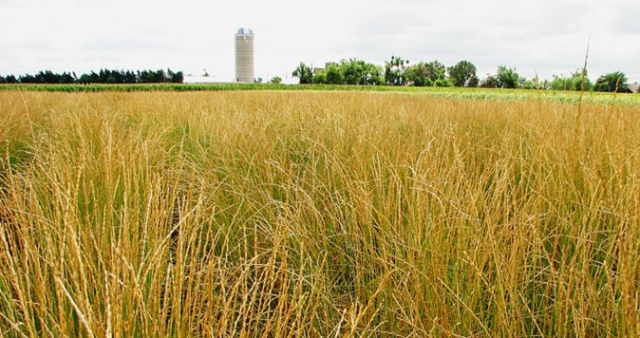BTN.com staff, December 7, 2015
What kind of cookies will you leave for Santa Claus this Christmas? Chocolate chip? Sugar? How about a Kernza cookie?
Kernza - also known as intermediate wheatgrass - is a new crop being developed at the University of Minnesota to replace better-known crops, with potentially promising economic and environmental results. Local Minnesota bakeries have started using Kernza to make cookies, pancakes, tortillas and more, and restaurants in New York and San Francisco are also experimenting with it in their recipes.
The future looks bright indeed for this revolutionary crop, and it?s largely thanks to a program at Minnesota called the Forever Green Agriculture Initiative. Professor Don Wyse of Minnesota?s Agronomy and Plant Genetics department heads up the initiative, which aims to develop the next generation of productive crops and also provide ecosystem services.

?We are in the process of developing an enterprise to grow, process and market Kernza seed,? he said. ?The end users are contracting with farmers to grow [it] - farmers are being paid a competitive price to grow Kernza.?
Wyse explained that farmers will save money if Kernza becomes more mainstream. That?s because it produces large yields of seeds that are a high-quality substitute for wheat, while its dense root system and rapid regrowth after harvest build soil carbon, store water for later use and prevent soil erosion.
It?s also a perennial crop, meaning it comes back year after year after being planted just once. It has higher levels of folate, calcium, lutein, fiber, Omega-3 fatty acids, selenium and vitamin B6 than whole wheat, and also has relatively low gluten content.
 Kernza is just one aspect of Forever Green?s mission, which involves enhancing the productivity and profitability of Minnesota agriculture by adding winter-annual and perennial crops to a system that currently relies heavily on summer-annual crops.
Kernza is just one aspect of Forever Green?s mission, which involves enhancing the productivity and profitability of Minnesota agriculture by adding winter-annual and perennial crops to a system that currently relies heavily on summer-annual crops.
Perennial and winter-annual crops can capture solar energy, water and nutrients with very high efficiency, according to Wyse?s research. In that way, they enable abundant production despite climate challenges and improve the condition of vital resources such as water, land and biodiversity. That, in turn, diversifies economic opportunities for Minnesota?s farmers.
In order to grow this enterprise, he explains that two kinds of research and development are critically needed: genetic improvements of plant materials, and development of new economic opportunities based on these systems.
Research programs at Minnesota will need to be expanded and intensified and more classes must be offered to students on breeding and management of these crops. Wyse feels the university is well-positioned to take these steps, since he is already working on some highly promising options for high-efficiency agriculture.
?The genomics, breeding, agronomics, and food-science research and development are continuing and will continue over many years,? he said.
[btn-post-package]The Minnesota professor earned his Ph.D. from Michigan State University in 1974 and now teaches about 20 percent of the time, spending the remaining 80 percent researching. His studies include the diversification of cropping systems, design and management of renewable energy systems, and selection and breeding of winter annual and perennial crops.
For Wyse, widespread Kernza adoption would represent the achievement of a lifelong dream.
?I grew up on a farm in Ohio and have always wanted to contribute to the development of agriculture and food systems that support human and landscape health,? he said.
By Meg Sullivan







 Check out what's coming up next live on B1G+.
Check out what's coming up next live on B1G+. 